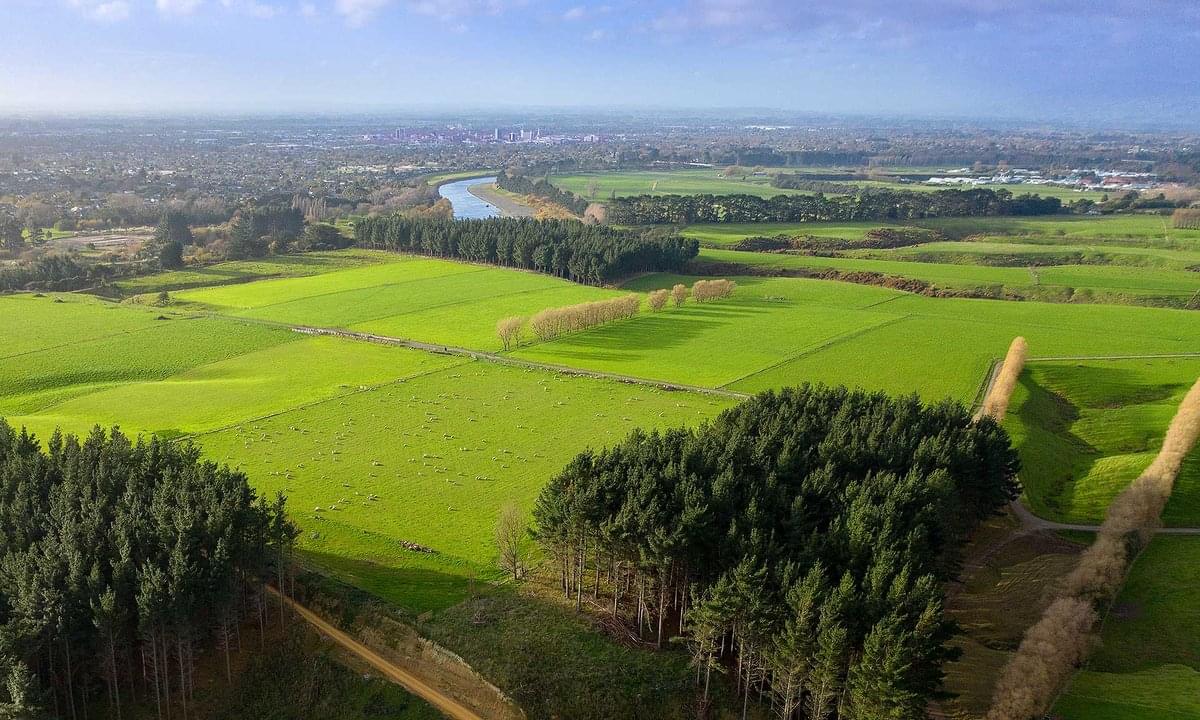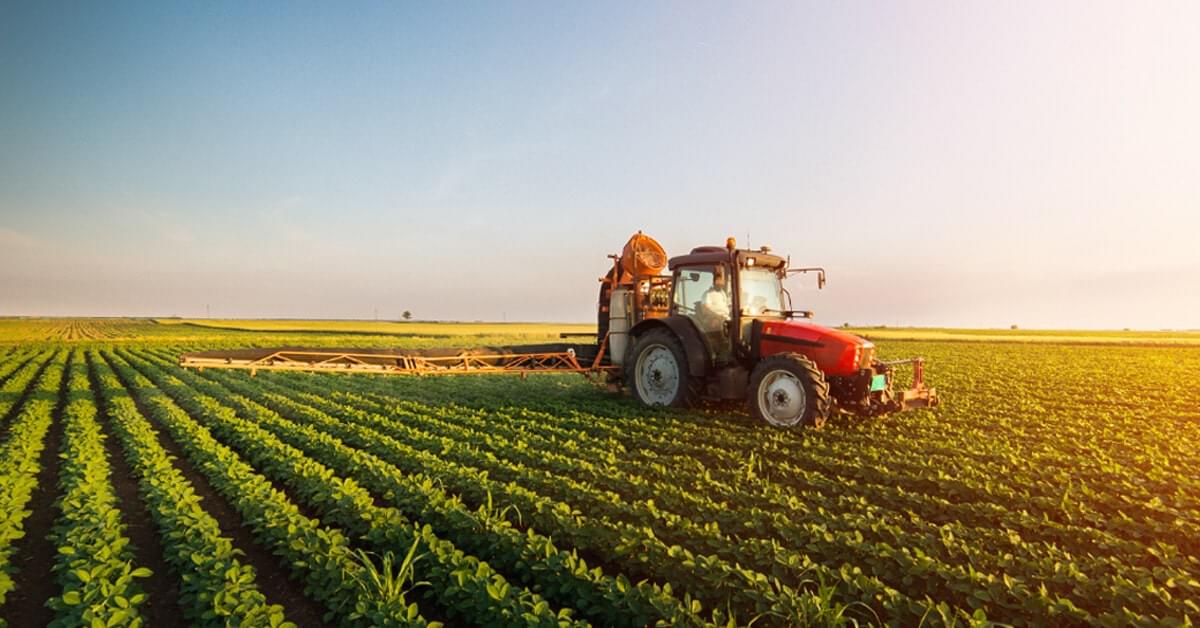The art and science of cultivating the soil, growing crops, and raising livestock is known as agriculture. It involves preparing plant and animal items for human consumption and distributing them to marketplaces.
Most of the food and textiles in the world are produced by agriculture. Agriculture produces leather, wool, and cotton. Agriculture also produces paper and timber for construction.
These goods, as well as the agricultural practices employed, may differ from region to region.
Sponsered2
Start of Agriculture
Agriculture’s expansion over the years has aided in the development of civilizations.
Prior to the widespread adoption of agriculture, humans spent the majority of their time obtaining food through wild animal hunting and plant gathering. People began to develop their knowledge of growing grain and root crops around 11,500 years ago, and they eventually adapted to a life based on farming.
Sponsered2
A large portion of Earth’s population was reliant on agriculture by 2,000 years ago. Although researchers are unsure of the exact cause, climate change may have played a role.
When humans started cultivating crops, they also started domesticating and breeding wild animals. Domestication is the process of modifying wild plants and animals for human consumption.
It’s likely that rice or corn was the first domesticated plant. Rice was been grown in China as early as 7500 BCE.
Sponsered2
Canis familiaris, or dogs, were the first domesticated animals and were employed for hunting. The next domesticated animals were likely sheep and goats. Moreover, pigs and cattle (Bos taurus) were domesticated (Sus domesticus). Several of these creatures had originally been targeted for their flesh and hides. Many of them are currently suppliers of milk, cheese, and butter as well. During time, people started using tamed animals like oxen for transporting, hauling, and plow work.
People were able to generate extra food thanks to agriculture. When harvests failed, they might consume the extra food or exchange it for other products. People were able to work on jobs unrelated to farming thanks to food surpluses.
Agriculture enabled the establishment of permanent communities by keeping once nomadic people close to their land. Trade brought these together. In some regions, new economies were so prosperous that cities and civilizations flourished. In Mesopotamia (present-day Iraq and Iran), close to the Tigris and Euphrates Rivers, and along the Nile River in Kemet, the oldest civilizations based on intensive agriculture first appeared (ancient Egypt).
Sponsered2
Improved Technology
The advancement of agriculture was extremely sluggish for thousands of years. Fire was one of the first instruments used in agriculture. Native Americans used fire to regulate the development of berry-producing plants because they were aware that these plants grew rapidly following a wildfire. Axes were used to remove trees from tiny plots of ground, and digging sticks were used to break up and till the soil. Improved agricultural implements made of bone, stone, bronze, and iron were created over time. New storing techniques emerged. As a precaution against food shortages, people started storing food in jars and pits sealed with clay. They also started creating clay pots and other culinary and transporting utensils.
Farmers in Mesopotamia created straightforward irrigation methods around 5500 BCE. Farmers were able to establish themselves in regions that were once considered unsuitable for agriculture by diverting water from streams onto their crops. People banded together and organized themselves to construct and maintain better irrigation systems in Mesopotamia, and subsequently in Kemet and China.
Sponsered2
Early farmers also created better plant types. For instance, a novel variety of wheat appeared in South Asia and Kemet around 6000 B.C.E. Its hulls were simpler to remove, it was stronger than earlier cereal cereals, and it could be used to make bread.
The best agricultural practices of the people they conquered were adopted by the Romans as they grew their kingdom. They documented the agricultural practices they saw in Africa and Asia in manuals and adapted them for use in Europe.
Additionally, the Chinese adopted farming equipment and practices from neighboring empires. Vietnamese rice was of a fast-ripening variety that enabled farmers to gather multiple crops in a single growing season. The popularity of this rice spread rapidly throughout China.
Sponsered2
Farmers in ancient Europe frequently planted in open fields. Three fields would be planted: one in the spring, one in the fall, and one that would remain vacant. The crop output was increased by this system’s preservation of soil nutrients.
Agriculture was turned into a discipline by the rulers of the Islamic Golden Age, which peaked around the year 1000 in North Africa and the Middle East. Farmers in the Islamic Golden Age mastered crop rotation.
Explorers brought novel plant and agricultural products to Europe in the 15th and 16th centuries. They brought back indigo (Indigofera tinctoria), a plant used to create blue dye, as well as coffee and tea from Asia. They brought products from the Americas, including tobacco, potatoes, tomatoes, corn (maize), beans, and peanuts (Arachis hypogaea). Some of these broadened people’s diets and became staples.
Sponsered2
Machinery
Early 1700s saw the start of a significant era of agricultural development in Great Britain and the Low Countries (Belgium, Luxembourg, and the Netherlands, which lie below sea level). The United States and Canada in especially saw a significant increase in food production thanks to new agricultural innovations.
Jethro Tull of England created an enhanced horse-drawn seed drill, which was among the most significant of these innovations. Farmers had previously planted seedlings by hand. For the seeds, Tull’s drill created grids of holes. Europe had adopted the technique of seed drilling by the end of the 18th century.
Sponsered2
In the US, numerous devices were created. Eli Whitney created the cotton gin in 1794, which shortened the time required to extract cotton fiber from seed. Cyrus McCormick’s mechanical reaper contributed to the modernization of the grain-cutting procedure in the 1830s. A horse-powered thresher developed by John and Hiram Pitts around the same time sped up the process of sorting grain and seed from chaff and straw. With the introduction of the steel plow by John Deere in 1837, it was feasible to work the difficult prairie soil with a lot less power. There were several significant improvements in farming practices in addition to new tools. Farmers increased the size and productivity of their livestock by selectively breeding animals (breeding those with desirable characteristics).
Animal breeding has been practiced by cultures for ages; evidence indicates that Mongolian nomads selectively bred horses during the Bronze Age. Beginning in the 18th century, selective selection was widely used by Europeans. The Leicester sheep, which was carefully bred in England for its high-quality meat and long, coarse wool, is a prime illustration of this.
Additionally, plants could be developed specifically for particular traits. Gregor Mendel’s heredity studies were released in Austria in 1866. Mendel discovered how traits were handed down from one generation to the next through his research with pea plants. His study paved the way for genetically modifying crops.
Sponsered2
During this period, new crop rotation techniques also developed. Over the course of the following century or so, many of these were implemented across Europe. For instance, the England-developed Norfolk four-field scheme was quite effective. It featured the yearly rotation of a number of crops, including wheat, ryegrass, barley (Hordeum vulgare), clover, and turnips (Brassica rapa rapa). Farmers were able to produce enough food to sell some of their harvest without having to clear any land for planting because this improved the soil’s nutrient content.
However, these events had little impact on the majority of the globe. Farmers in South America, Africa, Oceania, and Asia continued to practice traditional agricultural methods.
Agricultural Science
Sponsered2
An average American farmer in the early 1900s produced enough food to sustain a family of five. Many farmers today are capable of feeding that family and 100 additional people. How did this great leap in productivity come about? It occurred in large part as a result of scientific advancements and the creation of new power sources.
Most farms in the U.S. and Europe were using both gasoline and electricity to power equipment by the late 1950s. Draft animals and steam-powered equipment had been supplanted by tractors. In almost every stage of cultivation and livestock management, farmers used machines.
Early in the 20th century, farms in Germany and Japan started using electricity as a power source. In the United States and other highly industrialized nations, the majority of farms had electricity by 1960. Electricity provided lighting for agricultural structures and drove machinery including water pumps, milking systems, and feeding apparatus. Today, the entire environment in chicken coops and livestock barns is controlled by electricity.
Sponsered2
Farmers have historically employed a range of techniques to safeguard their crops from pests and diseases. In order to control insects, farmers have created strong crop varieties, applied herb-based poisons to crops, hand-picked insects off plants, and rotated crops. Nowadays, practically all farmers use chemicals to control pests, especially in highly industrialized countries. Pests include a wide variety of species, including bacteria, viruses, and fungi as well as insects, rodents, weeds, and mammals like mice and rabbits. Crop losses and prices have substantially decreased as a result of the usage of pesticides.
Farmers have used natural fertilizers, such as manure, wood ash, ground bones, fish or fish parts, and bird and bat droppings, known as guano, for thousands of years to replace or boost the nutrients in the soil.
Early in the nineteenth century, scientists identified the three elements—nitrogen, phosphorus, and potassium—that were most crucial for plant growth. Subsequently, the United States and Europe produced fertilizer with these ingredients. Chemical fertilizers including nitrates and phosphates are now widely used by farmers since they significantly boost crop yields.
Sponsered2
Pesticides and fertilizers, however, have their own set of issues. The environment has been disrupted by the strong reliance on chemicals, frequently resulting in the extinction of both beneficial and destructive species of animals. People’s exposure to chemicals may also be at risk for health problems, particularly if their water supply is contaminated. Researchers in the field of agriculture are looking for safer substances to use as insecticides and fertilizers. Some farmers rely less on chemicals and use natural controls.
Farming in Water
Aquaculture and hydroponics are two examples of agricultural cultivation. Both involve aquaculture.
Sponsered2
The study of growing plants in nutrient solutions is known as hydroponics. More than 50 times as much lettuce may be produced from a single acre of fertilizer solution as from the same quantity of soil.
Aquaculture, or basically the farming of fish and shellfish, was performed thousands of years ago in China, India, and Kemet. The ocean, lakes, ponds, and other bodies of water now use it all over the world. Shrimp farming is one type of aquaculture that has developed into a significant industry in many Asian and Latin American nations.
Freshwater and ocean fisheries are changing as a result of climate change and advancements in technology. Warm-water species have been pushed toward the poles by global warming, while cold-water species’ habitats have shrunk. The amount of fish is declining for traditional fishing communities in both developed and developing nations.
Sponsered2
Ocean habitats have been damaged by bottom trawling. Huge nets are suspended from fishing vessels and dragged at the ocean’s bottom in bottom trawling. Halibut and squid are caught in the nets, but they also stir up silt at the ocean’s bottom. The plankton and algae, which make up the base of the food chain, are disturbed by this.
Genetic Modification
Through random experimentation, humanity have developed new species of plants and animals for ages. Scientists created new strains of high-yield wheat and rice in the 1950s and 1960s. They brought them to Mexico and several regions of Asia. Grain production increased dramatically in certain areas as a result. The term “Green Revolution” has been used to describe this daring agricultural endeavor.
Sponsered2
Problems followed the Green Revolution’s successes. The new cultivars needed irrigation, herbicides, and chemical fertilizers to achieve great yields. Independent farmers cannot afford the new technology in countries that are either partially or moderately industrialized, and big business has taken over agriculture. Native plants and animals are also under stress as a result of the new, high-production crops.
Subsequently, researchers and farmers discovered the causes of the new strains. A new form of the green revolution emerged as a result: food genetic manipulation.
Genes, the genetic material that controls many aspects of an organism, are found inside every cell. Genetics is the study of how qualities are passed down through generations and what traits organisms inherit.
Sponsered2
People can choose the traits they want to reproduce scientifically if they have a better understanding of genetics. Both plants and animals now undergo selective breeding thanks to new technology.
Beginning in the 1970s, researchers discovered that they could rearrange genes and add new ones to crops and livestock to enhance disease resistance, production, and other desired traits.
These GMOs, sometimes known as GM foods, are now present in most of the highly industrialized countries. Scientists can change the DNA of animals, plants, and bacteria thanks to biotechnology. Transgenic organisms are GMOs with DNA or genetic material from different species.
Sponsered2
To boost a strawberry plant’s resilience to cold and so lengthen its growing season, a gene from an Arctic plant, for instance, might be introduced (spliced) into the plant’s DNA. A transgenic plant would be the strawberry.
Companies provide farmers genetically engineered seeds that are resistant to a number of the company’s insecticides and herbicides. Herbicides eliminate the threat to the crop posed by weeds and other plants. Farmers can use harmful chemicals with these seeds without endangering the harvest.
Animal husbandry has improved thanks to biotechnology (ranching, or the raising of domestic animals). Farm animals of today are bigger and grow faster than those of the past.
Sponsered2
For instance, cattle are grazing animals. Their internal processing of grasses and other plants has evolved. The digestive system of a cow becomes acidic when it consumes corn and other cereals. Because of this, it is simpler for harmful bacteria like E. coli to grow. Bacterial infections can injure the cow and affect the milk and meat that humans consume. To avoid such an infection, antibiotics are spliced into the DNA of feed corn. Since the 1950s, antibiotics have been used to promote cow growth. This approach has contributed to the emergence of bacteria that are resistant to antibiotics in both cattle and humans throughout time. In order to help cattle grow bigger and quicker, anabolic steroids and growth hormones are frequently administered.
There is a great deal of controversy concerning GM food. Growing Transgenic food allows farmers to produce more food with a smaller footprint and less effort. GM food is favored by many customers. Fruits and vegetables keep better and are less likely to bruise. Meats are saltier, tastier, and fattier.
GM foods, according to their detractors, are less nutritious and reduce biodiversity. The “free-range” and organic food sectors have expanded in reaction to “industrial farming.”
Sponsered2
The majority of farmers on the planet reside in the sparsely industrialized nations of Africa, Asia, and Latin America. Several of them continue the land cultivation practices started by their ancestors hundreds or even thousands of years ago. They don’t employ industrial agriculture equipment that requires pricey chemicals or manufacturing processes.
These individuals farm for a living. Unlike commercial farmers, who primarily raise crops to sell, they use the majority of the food they produce for themselves and their family.
Methods of Cultivation
Sponsered2
Globally, agricultural practices frequently differ greatly based on climate, geography, customs, and technological capabilities.
Permanent crops, or food grown on ground that is not replaced after each harvest, are a feature of low-tech farming. Permanent crops include coffee plants and citrus trees. Crop rotation, which is a more advanced farming technique, calls on an understanding of arable land. In addition to crop rotation and irrigation, academics and engineers also plant crops in accordance with the season, type of soil, and quantity of water required.
Farmers, who are typically women, sow corn in coastal West Africa just after the first rains of the growing season. They frequently employ slash-and-burn clearing, an age-old technique. The farmer starts by clearing all the brush off her land. She starts a fire when this foliage dries out. The soil is made easily turnable by the fire’s heat, and the fertilized soil is a result of the burned plants. The farmer then plants corn kernels that were stored from the harvest the year before.
Sponsered2
The African farmer puts other basic crops like peas or root vegetables like yams in between rows of corn. Intercropping is the process of producing multiple crops on the same land. Intercropping stops soil erosion from seasonal rains and moisture loss by covering the majority of the ground with vegetation.
The growing plants receive water from the rain. The farmer uses a hoe to weed her garden. She and her family pick the corn during harvest time, husk it, and stretch the ears out in the sun to dry. To produce porridge, the dry maize is ground.
Unless its fertility falls, the African farmer customarily cultivates the same plot for a number of years. She then relocates to a different plot, abandoning the first for up to 10 years. A growing population has now reduced fallow times and increased the prevalence of permanent farming.
Sponsered2
The agricultural practices utilized in the American Corn Belt are substantially dissimilar. The majority of the country’s corn production is farmed in the northern Midwest region, known as the “Corn Belt.” The vastness of American farms necessitates a lot of labor, thus farmers seldom ever work alone. Farmers incorporate leftover vegetation, or stubble, into the soil shortly after harvesting the corn in the fall. Farmers rework the soil in the spring with a disc harrow, an apparatus containing rows of razor-sharp steel discs. The discs sliced through the soil, reducing its size and introducing air to it.
Rows of seed are then sown by a planter driven by a tractor. High-yield, genetically modified maize kernels are dropped into the machine’s furrows, which are then filled up with dirt. Another machine injects liquid fertilizer into the earth once the corn seeds have germinated.
When harvest time comes around, the farmers utilize a tractor-pulled cultivator to soften the soil while also using herbicides to suppress weeds and pests.
Sponsered2
One thousand acres of corn may be planted by industrial farmers in the US. Monoculture is the practice of focusing on a single crop. Farmers select the corn ears and shell them into a bin using a mechanical harvester to harvest the crop.
The Corn Belt produces very little corn that is fit for human consumption. The majority of the maize farmed in the U.S. is used for industrial purposes such corn syrup sweeteners and as feed for livestock.
Livestock
Sponsered2
Billions of domesticated animals are raised and cared for in a variety of ways all over the world, from alpacas (Lama pacos) in Peru to zebus in India. Domesticated animals are a significant source of food in many nations.
For instance, the Fulani people have been nomads for a very long time in Nigeria. They go from one grazing location to another with their herds of cattle. The cattle graze on bushes and grasses on unproductive soil. Cattle are important to the Fulani because they provide milk, yet they are rarely killed for meat.
Beef cattle are bred all throughout the United States to develop quickly and produce a lot of fatty meat. The animals are transported to feedlots when they are five to twelve months old. They are given grain and vitamin supplements while being housed in pens there until they are of market size. They are then killed.
Sponsered2
In the developing world, the two methods of producing livestock are in competition with one another. The long, curving horns of Ankole cattle, which have been raised in Uganda, help disperse heat, and their digestive systems have evolved to cope with malnutrition and a lack of water. Nonetheless, the demand for milk in Uganda has compelled many farmers there to import Holstein cattle. Northern Europe is the breed’s original home. In an equatorial area, a lot of antibiotics, vaccinations, and other chemicals are needed to keep them healthy. The Ankole, which have thinner meat and less milk production, might go extinct within the next century.
Free-range poultry farming is a common practice among farmers worldwide. The birds hunt for food in fields or neighborhood yards, consuming anything they come across, including seeds, insects, kitchen trash, and extra grain.
Poultry production has developed into a significant agricultural sector in many highly industrialized nations. The same vaccines and hormones that are administered to cattle are also provided to birds. In order to produce eggs or meat, chickens are bred. More than a million birds could be found in a single chicken house. Automated systems frequently deliver food and water, gather eggs, and remove waste.
Sponsered2
Fight Against Hunger
The distribution of food and the growth of the population must keep up with each other. A huge political and agricultural issue exists here.
Not a lack of food, but an uneven distribution of the food supply around the world, is the problem. Some nations have benefited more than others from the population to arable land ratio. According to some analysts, governments’ policies have made it more difficult to distribute food equally. Local food shortages are still a result of disasters like floods and droughts.
Sponsered2
Inequality in the allocation of food resources is also a result of overpopulation. For the next 100 years, most of the population growth will take place in partially and moderately developed nations, where hunger can occasionally be a severe issue.
The issue of world hunger cannot be resolved by exporting food or agricultural technologies from nations with surpluses to those with shortages. Not all countries have enough money to acquire all the food they require, and many do not want to depend on foreign nations indefinitely. Also, many nations value biodiversity as a valuable resource and do not want to endanger it with GMOs.
The hunger issue will be resolved, according to experts, in two ways. First and foremost, a nation’s citizens must be able to grow or buy their own food. Second, people everywhere need to practice sensible spending and eating habits. How about addressing the overpopulation issue?
Sponsered2
Agriculture science will assist nations in converting to more wholesome food production techniques. New high-yield crop varieties are being created by scientists that need less herbicides and fertilizer. Such crops lessen the need for trading and expensive chemicals.
Without protecting the world’s land and water, it will be impossible to address the problems of feeding the hungry. A significant loss of priceless topsoil, water, and other resources has been caused by agricultural methods.
Better programs for replanting trees are required in many nations. A growing number of farmers are being forced into lands that are too fragile to support farming due to overpopulation. Worldwide irrigation has expanded as a result of the food need. In some places, irrigation has led to a decline in water levels, the drying up of rivers, and the depletion of wells. Chemicals used in agriculture to boost productivity frequently damage groundwater, soil, and food systems.
Sponsered2
Environmental damage is not always a result of agriculture. People may yet develop ways to end world hunger by preserving the land, water, and air, as well as by exchanging information and resources.
Sponsered2




